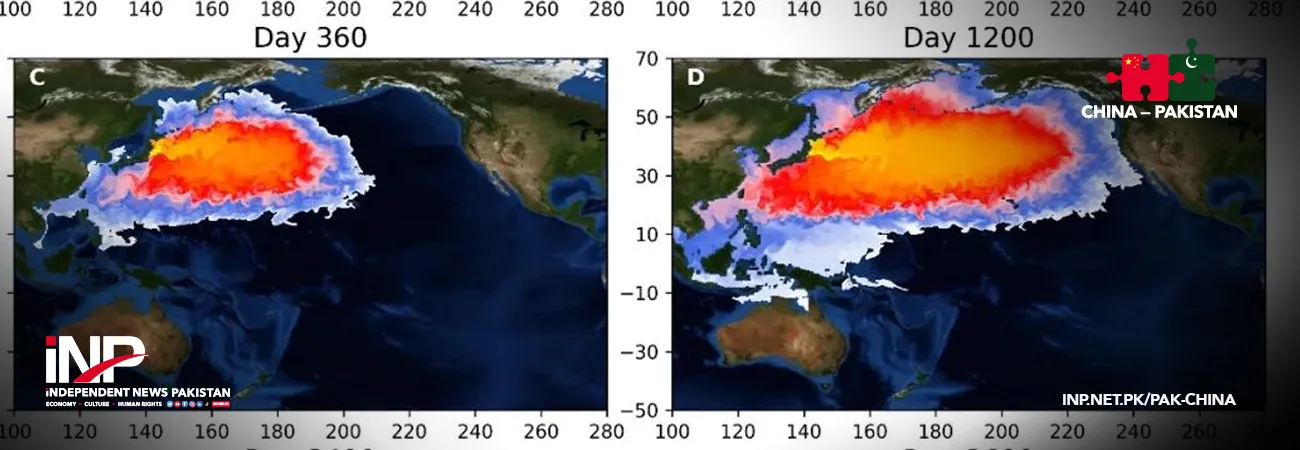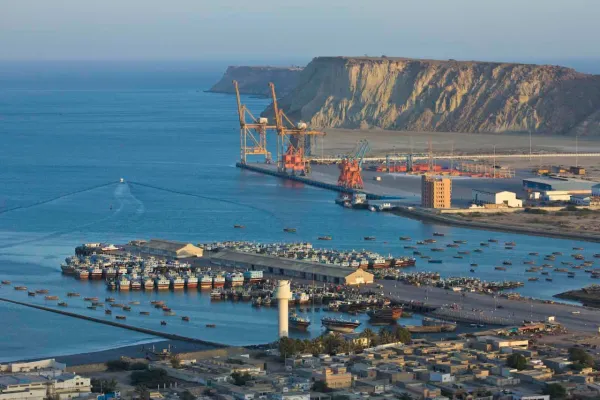i NEWS PAK-CHINA
The macroscopic simulation results of the dispersion model for radioactive substances on an oceanic scale indicate that the wastewater from the Fukushima nuclear power plant will spread through the northern waters of Australia and reach the Indian Ocean after a period of 2400 days, China Economic Net (CEN) reported on Friday quoting experts. In response to the challenge posed by nuclear wastewater storage, the Japanese Cabinet has made the decision to initiate the release of treated water contaminated by the Fukushima nuclear accident into the Pacific Ocean on April 24th,2023. Although the Japanese government has stated that the treated water contains minimal radioactive isotopes apart from tritium, and the concentration of tritium will be reduced to 1/40th of the relevant standards, questions remain regarding the dispersion of nuclear wastewater after discharge, its potential impacts on neighboring countries and the entire Pacific region. Additionally, the plan for nuclear wastewater discharge is expected to span 30-40 years, during which the possibility of radioactive substance accumulation has not been definitively confirmed.
This highly controversial decision has raised concerns globally about issues related to human health and ecological environments. As early as 2021, a team led by Academician Zhang Jianmin and Associate Professor Hu Zhenzhong from the School of Ocean Engineering at Tsinghua University Shenzhen International Graduate School, established diffusion models for radioactive substances at both macroscopic and microscopic levels, and conducted long-term simulations of the Fukushima nuclear wastewater discharge plan. Among these, the macroscopic simulations suggest that within 240 days of discharge, the nuclear wastewater will reach the coastal waters of China, and approximately 1200 days later, it will reach the North American coast, covering nearly the entire North Pacific Ocean. Within 2400 days, alongside the diffusion into the Pacific Ocean, a portion of the pollutants will also spread to the Indian Ocean via the waters north of Australia. At that point, the coastal waters of Southeast China will mainly exhibit a lower concentration indicated by a light pink color, while the western coastal waters of North America will be predominantly covered in higher concentration, denoted by red color.
The researchers further compared the impact on three coastal cities – Miyazaki in Japan, Shanghai in China, and San Diego in the United States. Analysis of the pollutant concentration curves reveals that around the 4000th day, the pollutant concentration near San Diego is approximately 0.01 units, which is about three times that of Miyazaki and forty times that of Shanghai. This phenomenon is primarily due to the strong ocean currents near Japan. Fukushima lies at the convergence of the Kuroshio Current (flowing northward) and the Oyashio Current (flowing southward). As a result, most pollutants do not migrate along the land's edge in a north-south direction but disperse eastward with the North Pacific Current. This outcome underscores the need to primarily consider its impact on the Asian coast during the initial phases of nuclear wastewater discharge. However, in the later stages, due to the sustained higher concentration of pollutants along the North American coast compared to most of East Asia, particular attention needs to be paid to the affected areas along the North American coast. In addition to macroscopic dispersion, the researchers also conducted simulations for the diffusion of tritium at a microscopic level.
According to Japan's discharge plan, the concentration of tritium contamination is approximately 0.29 Bq/m³, which is relatively modest compared to the background concentration of tritium in the ocean. Nevertheless, this study remains significant for predicting the long-term dispersion of pollutants, formulating appropriate responses to the nuclear wastewater discharge plan, and monitoring the subsequent concentration of radioactive substances. Building on this research, further experiments are necessary to explore the sensitivity of the ecological environment to radioactive substances, ascertain the degree of impact of increased radioactive substance concentrations on marine and human environments, and ultimately determine the repercussions of the nuclear wastewater discharge on the ocean and humanity as a whole. These findings are published under the title "Discharge of treated Fukushima nuclear accident contaminated water: macroscopic and microscopic simulations" in the journal "National Science Review." Information in this article comes from third party providers. This website does not provide explicit or implied warranty for such information and is not liable for any losses directly or indirectly caused by using such information.
Credit: Independent News Pakistan (INP) — Pak-China









